
The use of wireless technologies has proliferated into numerous applications from toys, home automation, smart street lighting, industrial automation and mobile communications. In the era of the Internet of Things (IoT), the demand for smart sensors and end equipment to provide further data for intelligence is on the increase. From monitoring how much energy you are using to monitoring industrial machines, the information gathered can provide a better understanding on the way assets can be better deployed, improving efficiencies, which in the long run will lower running costs. Also, should critical operating parameter fall outside the normal operating conditions, preventative maintenance can lead to a reduced down time.

When designing a new application (depending on the design parameters, e.g. data rate, range, battery life, etc.), there are a number of wireless technologies designed to fulfil those requirements such as Wi-Fi, Bluetooth, Zigbee, IEEE802.15.4, LTE CAT-1, NB-IoT and subGHz ISM bands.
Often, most wireless module manufacturers provide solutions as discrete components or in the form of pre-certified modules. However, usually the form factor of the devices for each different protocol is different and not usually pin compatible, so before committing to a new PCB design, the type of wireless technology needs to be chosen very carefully depending on the range, data rate, topology of the wireless network e.g. Point-to-Point (P2P), Star or Mesh.
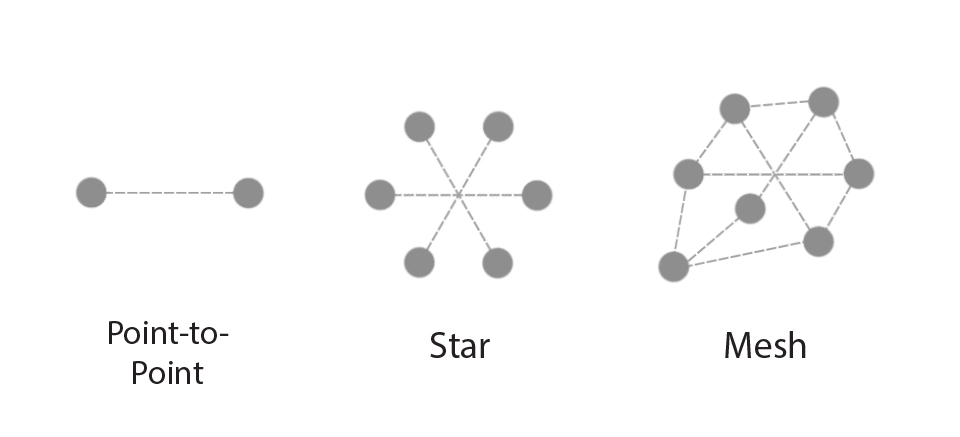
The next step for Design Engineers is to look at the capability for cloud connectivity. If capable, does the link need to be secure and how do you implement this? For a Design Engineer, this is a lot to think about. How do you get the device data from the end nodes up into the cloud? This article describes what Digi International offers around its XBee3® technology to help customers connect to the cloud.
About the XBee3®
To help customers get a head start with their new XBee3® technology, Digi has designed the XBee3® with multiple protocols in Zigbee, 802.15.4 and their own proprietary meshing protocol, called Digimesh, which is much leaner than the Zigbee standard and well-suited to a battery-powered network. There are also variants for NB-IoT, LTE CAT-1. The advantage of this is that there’s a common form factor on either SMT or THT devices, so the same PCB footprint can be used for all the different Digi protocols.
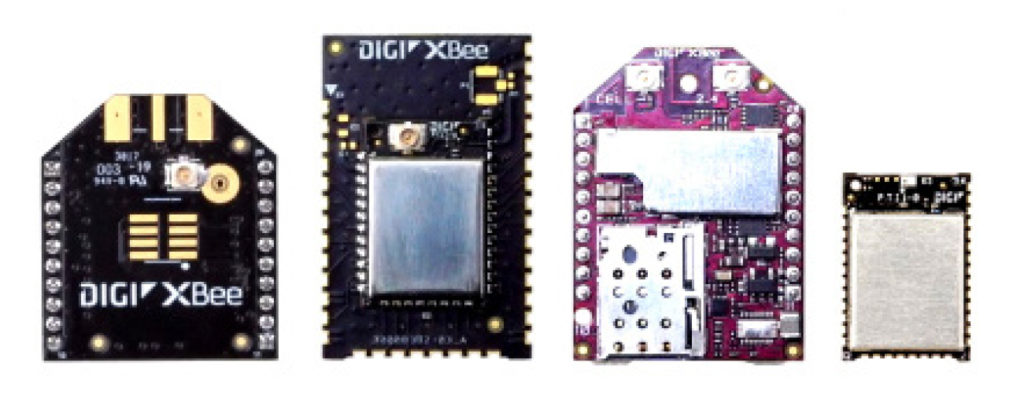
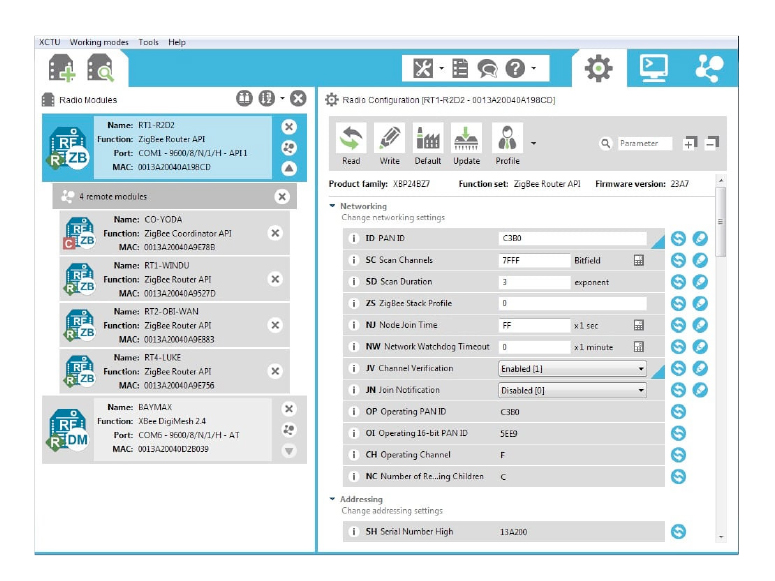
Development Tools
To enable designers to configure, evaluate and optimise an XBee3 communications network, Digi provides robust tools such as the XCTU (XBee Configuration Tool Utility).
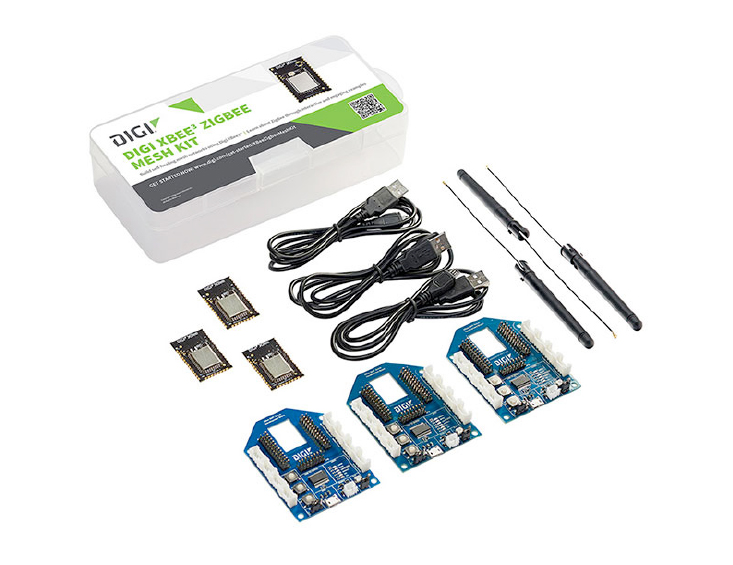
Using the XBee3® development kits, designers can readily attach the XCTU to their XBee3® devices by the USB cable initially to configure, and then remotely, to start sending messages between devices and to perform range testing. A message framework function also enables designers to understand how the message frames are setup.
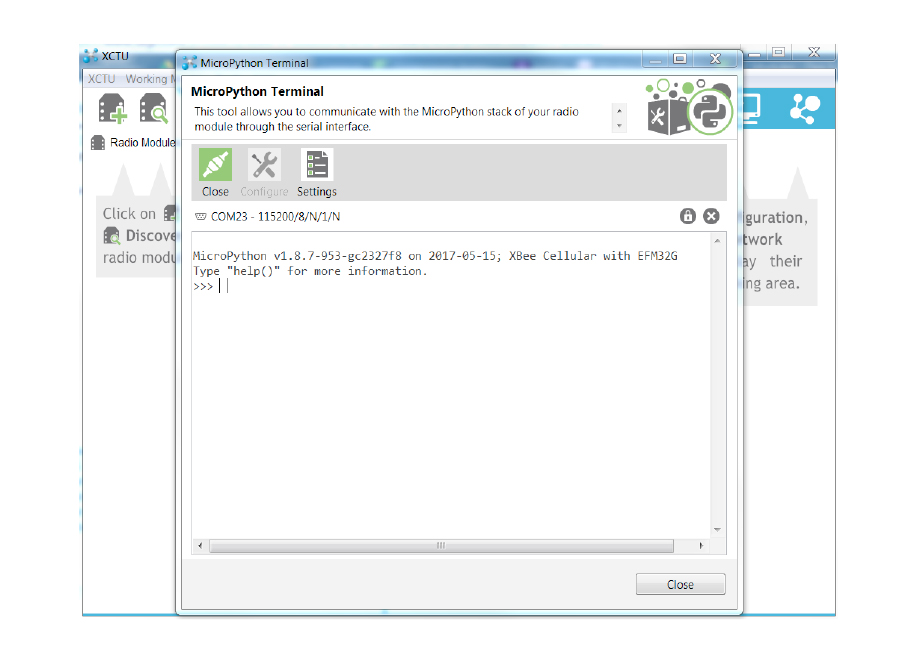
New for the XBee3®, software development can be achieved with Micropython. 32KB flash and 32KB ram are available to enable the code to be programmed onto the XBee3 and run standalone. This is ideal if an additional micro is not required and can help keep the cost down and if the design is battery powered, battery life could be improved. To enable Micropython development, Digi provide the PyCharm toolset which includes XBee3® examples using the I2C, digit I/O, to help designers getting started.
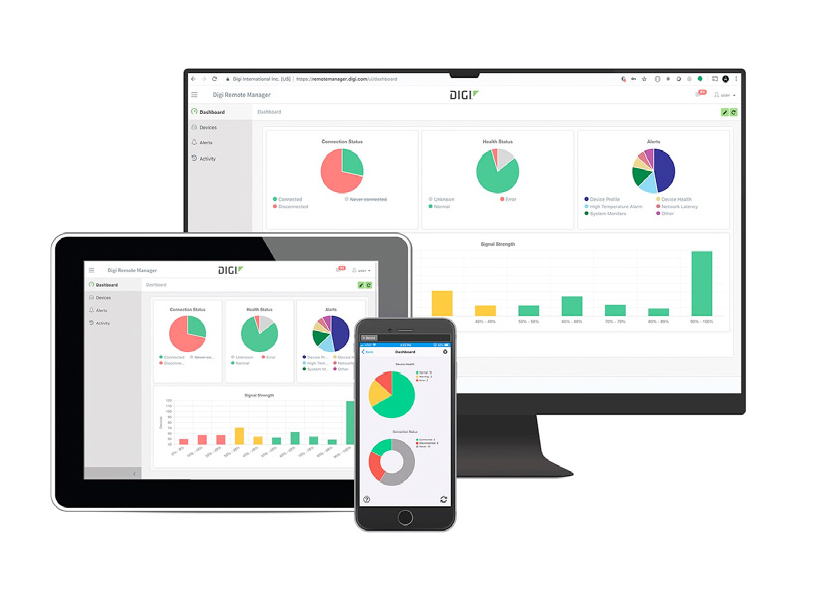
Connections to the Digi Remote Manager® (DRM)
For companies who do not have a cloud solution in place, trying to find different companies for software and hardware could be a challenge. To overcome this, Digi International have put together an eco-system for all of their embedded products to enable customers a seamless design flow to get their design working and information up into the cloud. Digi Remote Manager® (DRM) enables customers to manage and control their embedded devices from a central, secure platform anywhere in the world. The status and location of edge-devices can be monitored and if required, firmware over the air updates can be achieved.
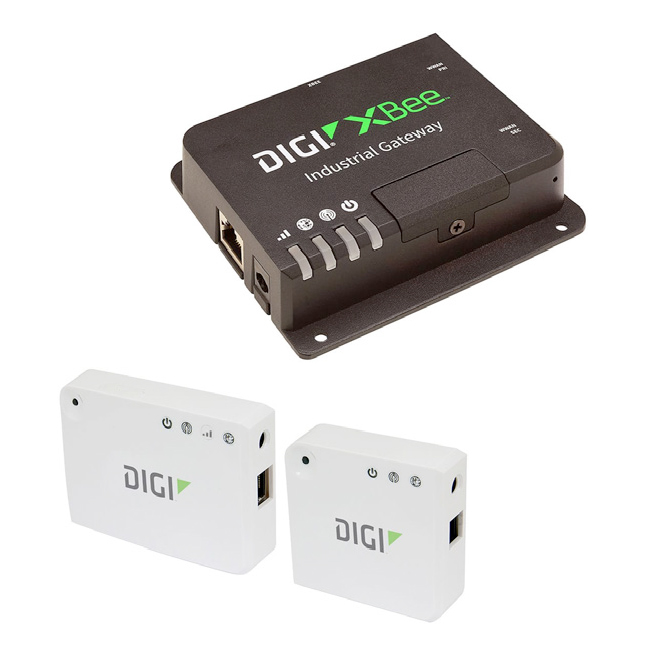
DRM can then be integrated to cloud solutions such as Microsoft Azure, AWS or other customers choice of cloud systems.
To enable the Digi XBee3® to connect to DRM, Digi also offer XBee® gateways which can communicate to your local XBee® network as a concentrator and via Wi-Fi, ethernet or cellular connectivity (with fallback capability should one of these channels fail) to connect to the DRM. A programming API is available for DRM to enable companies to integrate this into their cloud application code.
Security – Digi Trustfence®
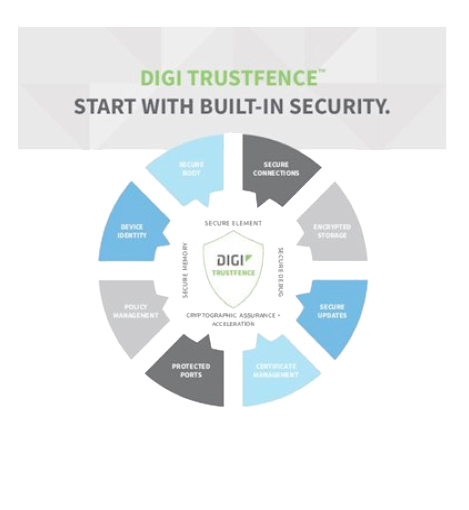
Of course, anything which is potentially connected to the worldwide web will be a target for cyber criminals. Therefore, integrating security is of utmost importance in any design today. The Digi security platform called Trustfence® is built into every Digi product. It takes a layered approach and can grow and adapt according to your system. Trustfence® takes leading industry standards and relevant security certifications, i.e. HIPAA, FIPS140-2, and NIST. Compassing the Digi XBee3® end node device, up to through the gateway and into DRM, so even if you are not a cyber security expert, you can be sure Trustfence® can protect your design and deployment with confidence.

Click here to speak to our of our experts and see how you can benefit from the Digi XBee ecosystem.
